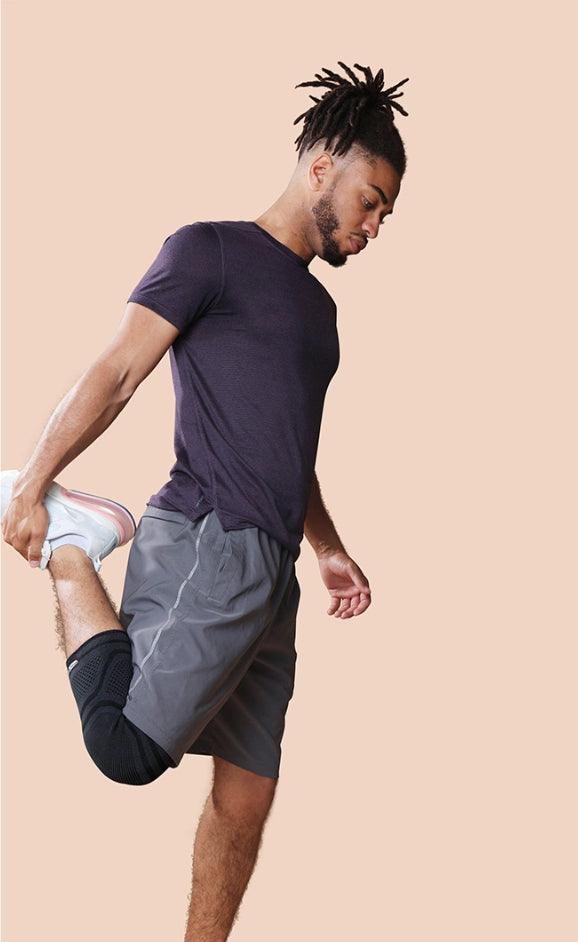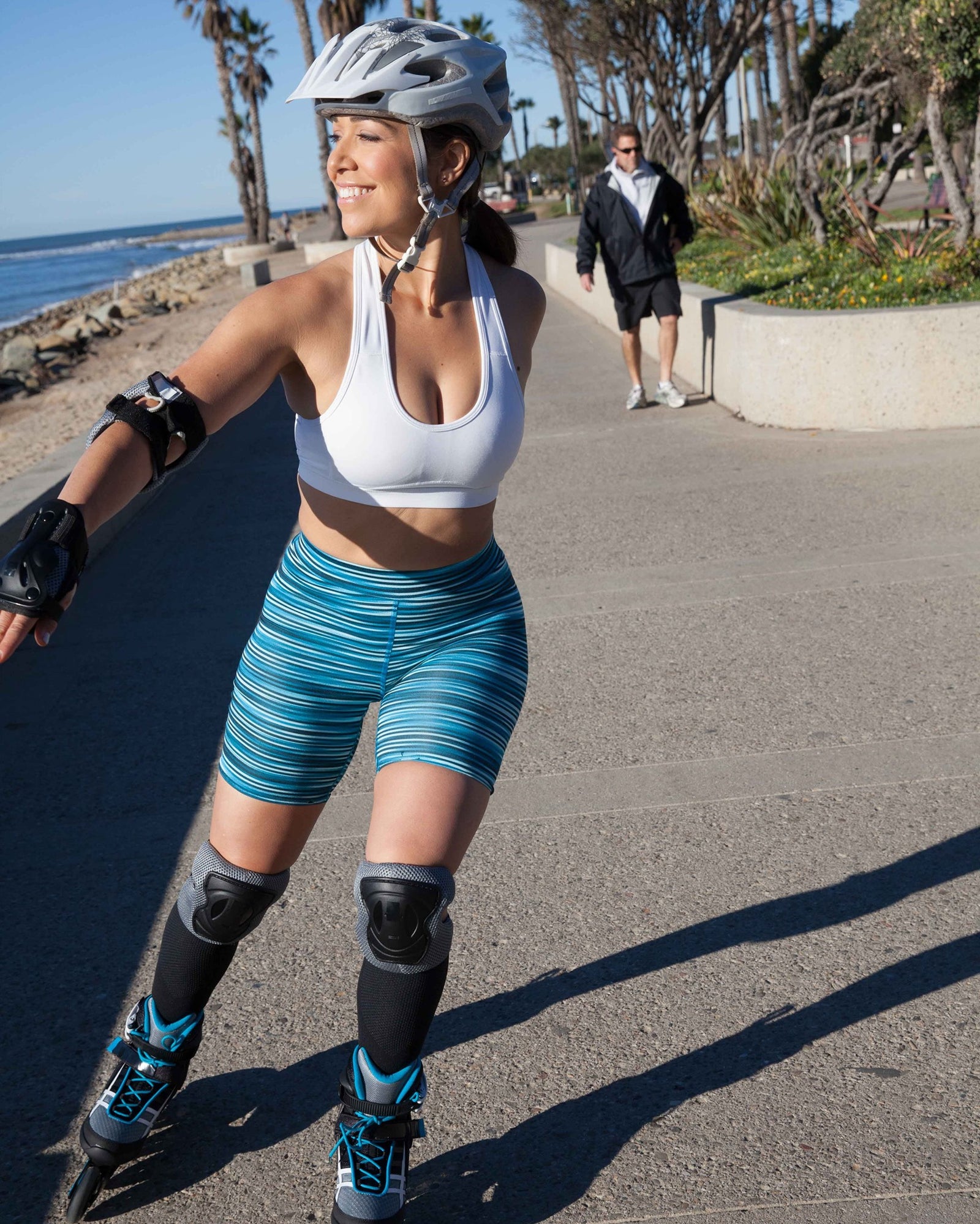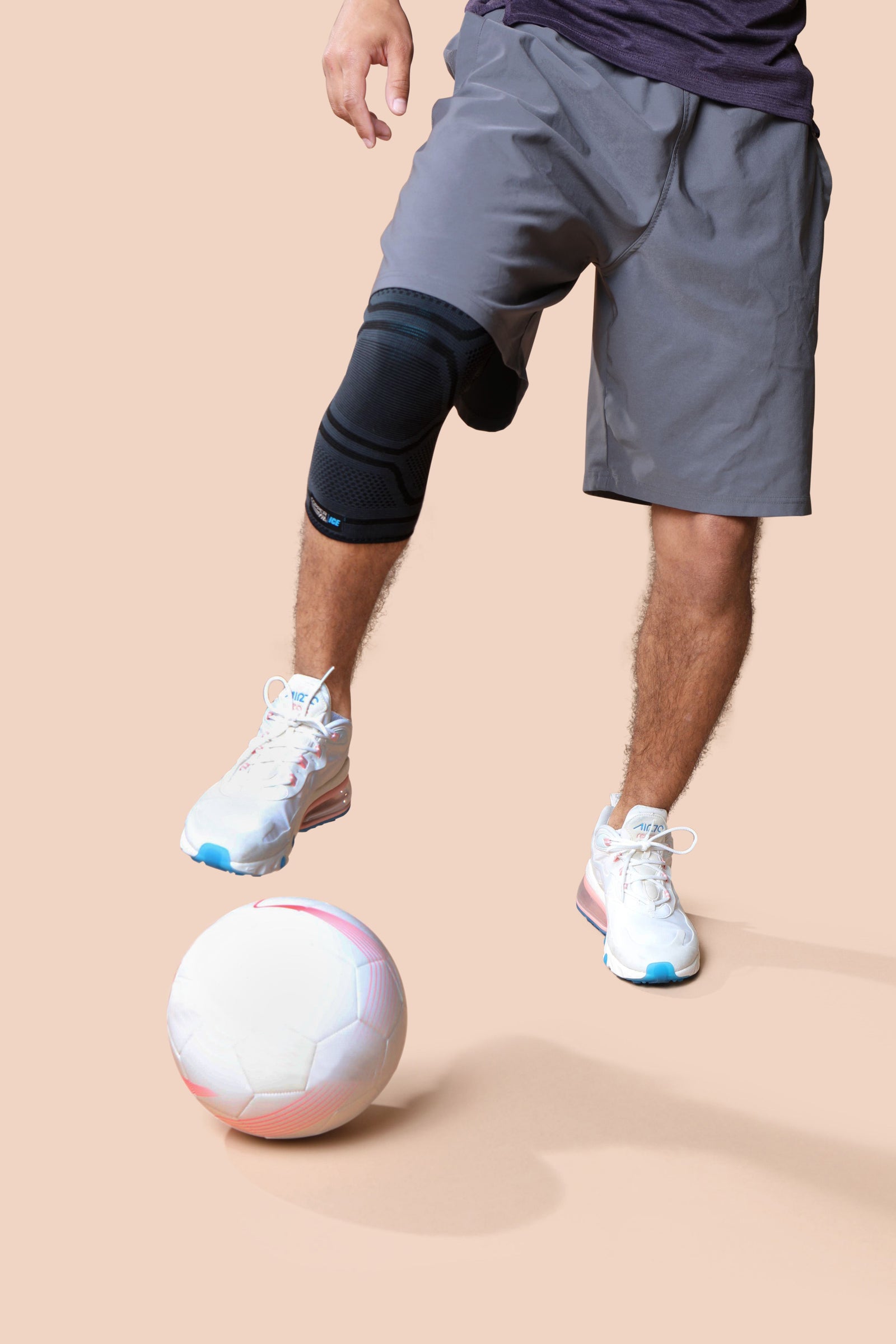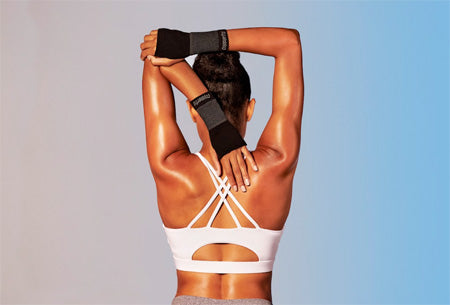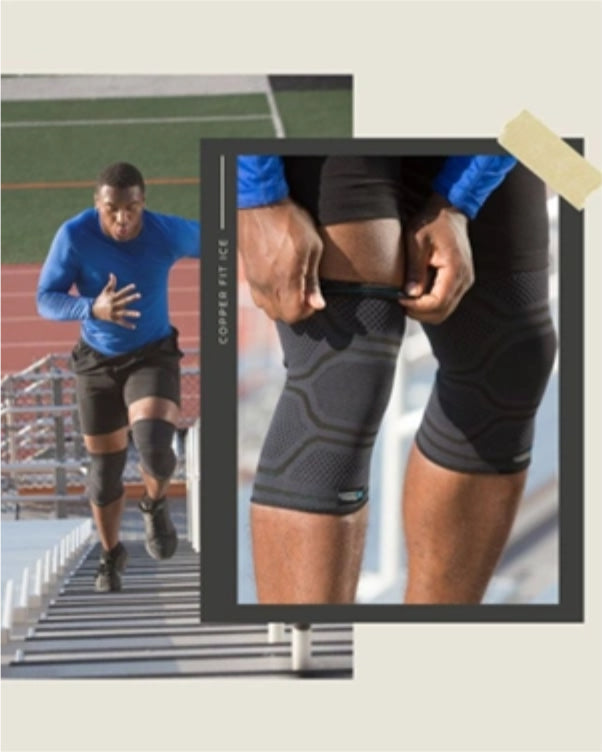
Key Takeaways
- Rucking is a simple, accessible form of exercise that builds strength, endurance, and confidence without high-impact movement.
- Adding weight to a walk increases muscular engagement and calorie burn while supporting healthy circulation and natural recovery.
- Getting started is easy: begin light, focus on posture, and use supportive gear like compression sleeves or socks to help soothe tension and keep you moving comfortably.
Your grandparents may have told you about their childhood days of walking five miles to school uphill (both ways), lugging their heavy bookbag, often in the snow. Well, this age-old story is not so dissimilar from the new exercise trend taking the world by storm: rucking.
Rucking, or walking on various terrains with a weighted backpack, has exploded in popularity because it blends simplicity, challenge, and versatility. You don’t need a gym membership or a complicated routine. All you really need is a backpack, a bit of weight, and the willingness to take that first step.
Whether your goal is to increase endurance, build strength, or simply feel better during your daily activities, rucking offers a balanced way to stay active without putting unnecessary stress on your joints.
So, are you ready to rival your grandparents with tales of your own walking adventures? Let’s step into it.
What Is Rucking?
Rucking originates from military training, where soldiers routinely carry weighted packs over long distances to build endurance. Today, it’s become a widely adopted fitness practice, gaining popularity as a straightforward and effective form of exercise.
At its core, rucking is just walking with added weight. That resistance increases the effort your body puts into each step, helping you build strength and endurance through natural movement.
What makes rucking so appealing is how approachable it feels. You choose your pace, your route, and your weight. With every walk, your body gets a little stronger, your stride becomes more confident, and your endurance gradually improves.
Why Rucking Works: The Science Behind It
Rucking may look simple, but there’s real science behind its effectiveness. Adding weight creates resistance that challenges your body while still keeping the activity low-impact. This makes rucking a solid option for anyone who wants a workout that’s both joint-friendly and energizing.
Increased Calorie Burn Through Loaded Movement
Anytime you increase muscular demand, your body works harder. Carrying weight raises the intensity of your walk without requiring speed or running. This helps elevate calorie burn in a controlled, sustainable way.
Greater Muscle Engagement
With a weighted pack, your body recruits more muscles to stabilize and move efficiently. Your calves, quadriceps, hamstrings, glutes, core, and even upper back all contribute to each step. This type of engagement supports overall strength and helps your body feel more capable in everyday movements like lifting, bending, or climbing stairs.
Steady Movement Supports Circulation
Rucking encourages a consistent walking rhythm through the added resistance, which helps support healthy blood flow throughout your body. This steady movement can help soothe tension and support natural recovery, making it a great option for active adults who want to stay moving without overloading their joints.
Strengthening Without Excess Impact
Many people are drawn to rucking because it offers a challenging workout without harsh impact on the knees, hips, and ankles. The load provides resistance, but your movement stays smooth and controlled. This balance is what makes rucking feel tough yet attainable, especially for people easing back into fitness or looking to stay active long term.
What Are the Benefits of Rucking?
Rucking delivers a wide range of benefits that support your fitness, mobility, and overall well-being.
Here are some of the most impactful advantages:
1. Builds Strength and Endurance
The added weight helps support the development of muscular endurance. Over time, your legs, core, and back work more efficiently, helping you move with greater stability and confidence.
2. Supports Better Functional Fitness
Rucking trains your body to handle everyday tasks, like carrying groceries, climbing stairs, lifting items, or moving around your home or workplace with ease. This kind of strength carries over into many areas of your life.
3. Helps Soothe Tension From Long Periods of Sitting
If you spend long hours sitting at a desk or driving, rucking can be a refreshing reset. The sustained movement helps loosen stiffness and supports your body’s natural mobility.
4. Low-Impact Challenge That Fits Most Lifestyles
Rucking is a great option for people who want something more intense than walking but less jarring than running. You get the benefits of resistance training and cardio without the pounding.
5. Supports Mental and Emotional Wellness
Spending time outdoors and engaging your body through steady movement can help settle racing thoughts, improve your mood, and help you feel more grounded. Many people find rucking to be a relaxing, empowering break from daily stress.
Gear Guide: What You Need To Start Rucking
One of the most encouraging parts of rucking is how little equipment you need to get started. Still, having the right gear can make your experience more comfortable and enjoyable.
1. A Durable Backpack or Ruck Pack
Choose a backpack with padding, supportive straps, and an adjustable fit. The goal is to keep the weight secure so it stays close to your body while you walk.
2. Weight Options
You can start with almost anything, including weight plates, dumbbells, filled water bottles, or even bags of rice. Beginners do well with lighter loads at first, focusing on good posture and stable movement.
3. Supportive Footwear
Comfortable, supportive walking or hiking shoes make a big difference. Look for cushioning, strong heel support, and a stable midsole to help maintain proper form with added weight.
4. Compression Gear (Optional but Helpful)
Compression socks or sleeves can help support healthy blood flow during longer rucks. They can also help soothe soreness and tension in the legs, especially when you're increasing distance or weight. Moisture-wicking and odor-reducing features also keep you comfortable on extended walks.
How To Start Rucking Safely
Getting started with rucking feels refreshingly simple, and a few smart habits help you build strength and confidence without overloading your body. Begin with a weight that feels manageable.
Many people start with 5–10% of their body weight. Focus on maintaining upright posture, relaxed shoulders, and a smooth, comfortable stride.
Start with shorter sessions, such as 20–30 minutes, and gradually increase your duration as your endurance improves. When your walk feels steady and strong, you can slowly add more weight. Allow your body time to adapt between increases so your muscles and joints stay supported.
A brief warm-up helps your body ease into the movement. Light ankle circles, hip openers, and an easy walk for the first few minutes can prepare your muscles and joints.
After your ruck, gentle stretching supports natural recovery. Always pay attention to how your body feels throughout your training. If something feels off, lighten the load, shorten your session, or take an extra rest day when needed.
Tips for Getting the Most Out of Your Rucks
Small adjustments can make each ruck feel smoother and more rewarding. Try mixing different types of terrain to challenge your muscles in new ways without overwhelming them. Keep your backpack straps secure so the weight stays close to your body, preventing unnecessary tension.
You can experiment with interval pacing by alternating between your natural walking speed and a slightly quicker pace. This helps boost your cardiovascular effort without straining your joints.
On longer rucks, consider compression sleeves to help support circulation, reduce odor, and soothe muscle soreness so you can stay consistent with your routine. Staying hydrated before, during, and after your walk helps keep your body energized and ready for the next session.
Tracking your progress by distance, time, or weight can be a motivating way to see your steady improvement.
Common Rucking Mistakes To Avoid
One of the most common missteps is starting with too much weight. A lighter load helps you practice form and stay comfortable. Another frequent issue is leaning too far forward while walking; try to keep your spine neutral and your gaze ahead to encourage even movement.
Avoid walking in unsupportive shoes, since worn-out or unstable footwear can lead to unnecessary tension. Give your body rest days as needed so your muscles can adapt. And always stay aware of your surroundings by choosing safe, visible routes, especially if rucking in low-light conditions.
Frequently Asked Questions
1. Is rucking good for weight loss?
Rucking increases calorie burn by adding resistance to your walk, making it a strong option for people who want to support their weight-loss goals. It also builds strength and endurance in a way that feels manageable for many fitness levels.
2. How heavy should my ruck be?
Beginners often start with 5–10% of their body weight to ensure good form and a comfortable stride. You can increase weight gradually as your endurance improves and your body adapts.
3. Can I ruck every day?
Many people ruck several times per week, but daily rucking depends on your fitness level and how your body feels. Rotating lighter and heavier days or adding rest days helps support natural recovery.
The Bottom Line
Rucking is one of the most approachable ways to build strength, support endurance, and feel more capable in your everyday life. At Copper Fit, we love that it gives people a way to challenge themselves while still listening to their bodies, moving at their own pace, and celebrating steady progress.
Whether you’re new to fitness or looking for a fresh way to stay active, rucking helps you keep moving forward—step by step—with comfort, confidence, and long-term motivation.
Sources:
Metabolic Costs of Walking with Weighted Vests | Medicine and Science in Sports and Exercise
What is muscular endurance and how to improve it | Medical News Today

